How to String a Fishing Pole
Learn how to string a fishing pole like a pro! Our step-by-step guide will teach you the essential techniques for properly threading your fishing line, ensuring a successful and enjoyable fishing experience. Fishing is a timeless pursuit that connects us with nature’s beauty and offers a peaceful escape from the hustle and bustle of everyday life. Whether you’re a seasoned angler or just starting on your fishing journey, one essential skill you must learn is how to string a fishing pole. Properly setting up your fishing pole is not only crucial for casting accurately but also ensures a smooth and enjoyable fishing experience.

In this beginner’s guide, we’ll walk you through the step-by-step process of how to string a fishing pole for beginners. Providing valuable tips, and highlighting the importance of selecting the right fishing line and understanding the various components of your fishing setup.
So, let’s dive in and unravel the secrets to mastering this fundamental skill that will undoubtedly enhance your fishing adventures. Whether you’re planning to fish in freshwater or saltwater, understanding how to string a fishing pole is the first step toward a successful and fulfilling fishing experience.
What Is A Fishing Pole?
To learn on how to string a fishing pole, you must know about a fishing pole. A fishing pole, also known as a fishing rod, is a long, slender, and flexible device used in fishing to cast a fishing line with a hook, lure, or bait, into the water with the intention of catching fish. Fishing poles are essential tools for anglers, as they allow for accurate casting and control over the fishing line’s movement in the water.
These rods come in various lengths, materials, and designs, each tailored to specific fishing techniques and target fish species. The fishing pole serves as the primary link between the angler and the fish, making it an indispensable component of any fishing setup. Whether you’re a casual fisherman or a dedicated angler, selecting the right fishing pole is crucial to maximize your fishing success and overall enjoyment.
Choose the Right Fishing Pole: A Comprehensive Guide
Fishing is more than just a recreational activity; it’s a timeless tradition that allows us to connect with nature, unwind, and experience the thrill of the catch. Whether you’re a seasoned angler or just starting out, selecting the right fishing pole is essential for a successful and enjoyable fishing experience. In this guide, we’ll explore the factors to consider when choosing the perfect fishing pole for your needs.
Types Of Fishing Poles
Fishing poles, also known as fishing rods, come in a variety of types, each designed to suit specific fishing styles, environments, and target species. Understanding the different types of fishing poles can help you make an informed choice based on your preferences and the type of fishing you plan to do. Here are some common types of fishing poles:
Spinning Rods: Spinning rods are versatile and popular among anglers of all levels. They’re suitable for a wide range of fishing styles, including freshwater and light saltwater fishing. These rods feature a reel mounted on the underside of the rod, and the guides (rings) are large enough to allow the line to pass through freely. Spinning rods are great for casting light lures, live bait, and small to medium-sized fish.
Casting Rods: Casting rods, also known as baitcasting rods, are designed for more precise and controlled casting. They are often used for heavier lures and larger fish. These rods have the reel mounted on the top side, and the guides are smaller and face upward to control the line’s movement. Baitcasting rods require some skill to master, but they offer excellent accuracy.
Fly Fishing Rods: Fly fishing rods are unique in design and are used for fly fishing, a method that involves casting lightweight artificial flies on the water’s surface to mimic insects or baitfish. These rods are typically longer and more flexible, allowing for delicate presentations and graceful casting techniques. Fly fishing rods are commonly used in freshwater environments like rivers and streams.
Surf Rods: Surf rods are long, powerful rods designed for casting bait and lures from the shore into the ocean. They are used in surf fishing to target species that venture close to the coastline. These rods are built to handle heavy weights and long-distance casting.
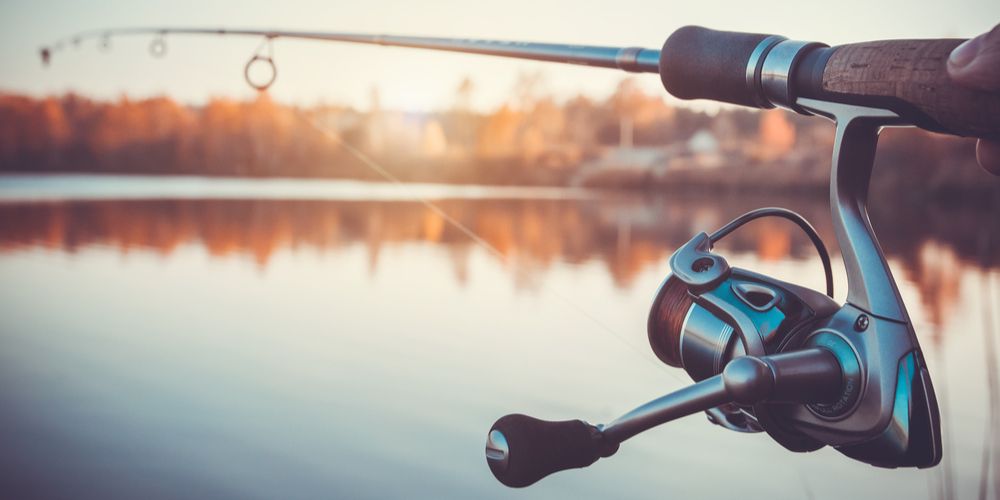
Some More Fishing Rod Types:
Trolling Rods: Trolling rods are used for trolling, a fishing technique where lures or bait are trailed behind a moving boat. These rods are sturdy and built to withstand the resistance and fight of larger fish while being pulled through the water. Trolling rods often feature multiple rod holders on the boat to manage multiple lines simultaneously.
Ice Fishing Rods: Ice fishing rods are specially designed for fishing through holes in frozen bodies of water. These rods are typically short in length and lightweight, allowing anglers to feel even the subtlest bites from fish in icy conditions. Ice fishing rods are essential for targeting species like perch, walleye, and trout in cold climates.
Telescopic Rods: Telescopic rods are portable and convenient for traveling anglers. These rods can collapse down to a compact size, making them easy to transport. They come in various styles, including spinning, casting, and fly fishing telescopic rods, catering to different fishing preferences.
Ultralight Rods: Ultralight rods are designed for finesse fishing and are suitable for catching small to medium-sized fish. These rods are sensitive and lightweight, making them ideal for situations where a delicate presentation is essential, such as fishing in clear water or targeting finicky fish.
Factors To Consider
Fishing is more than just a recreational activity; it’s a timeless tradition that allows us to connect with nature, unwind, and experience the thrill of the catch. Whether you’re a seasoned angler or just starting out, selecting the right fishing pole is essential for a successful and enjoyable fishing experience. In this guide, we’ll explore the factors to consider when choosing the perfect fishing pole for your needs.
Know Your Fishing Style: The type of fishing you plan to do is the foundation of your pole selection. Are you into freshwater fishing in lakes and rivers, or are you more interested in saltwater fishing along the coast? Are you casting from a boat or from the shore? Different fishing styles require different types of rods, so understanding your preferred method is crucial.
Consider the Species: The size and species of fish you’re targeting also play a significant role in selecting the right fishing pole. Lighter rods are suitable for smaller fish, while heavier rods are necessary for larger, more powerful species. Research the average size of the fish you intend to catch to determine the appropriate rod strength.
Rod Length: Fishing rods come in various lengths, typically ranging from 5 to 12 feet or more. Shorter rods offer more control and accuracy for close-quarters fishing, while longer rods are better for casting longer distances and for handling larger fish. Consider the environment you’ll be fishing in and the casting distance you need.
Handle and Grip: The comfort and ergonomics of the handle are important, especially if you plan to spend long hours fishing. Handles can be made from cork, foam, or other materials. Make sure the grip feels comfortable in your hand and provides a secure hold.
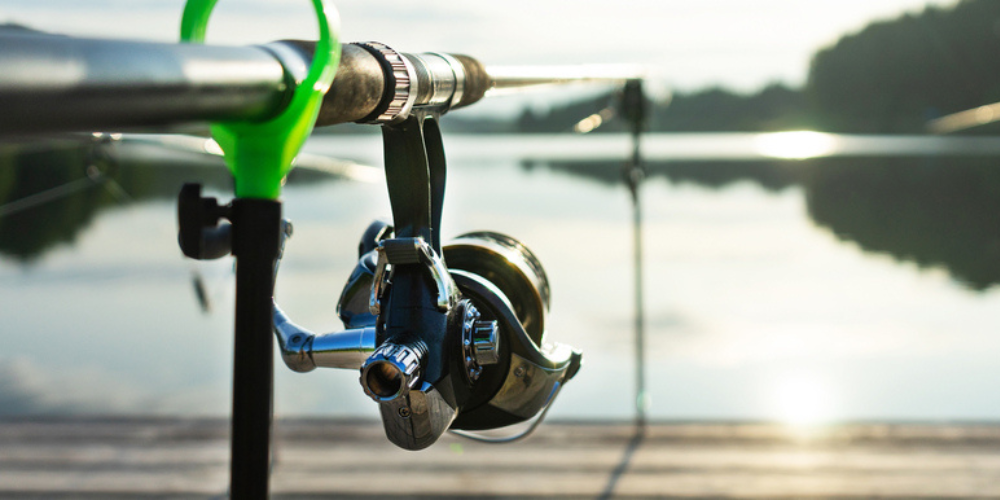
Take a Look Some Other Factors:
Action and Power: The action of a fishing rod refers to how much the rod bends when pressure is applied to the tip. It can be fast, medium, or slow. Power, on the other hand, indicates the rod’s strength, ranging from ultralight to heavy. Match the rod’s action and power to your fishing style and target species. Light action rods are suitable for finesse fishing, while heavy action rods are built for heavy lures and big fish.
Material and Construction: Fishing rods are made from various materials, such as graphite, fiberglass, or a combination of both. Graphite rods are lightweight and sensitive, making them great for detecting bites, while fiberglass rods are more durable and can handle heavier loads. Consider the construction quality, as a well-constructed rod will last longer and perform better.
Budget: Fishing poles come in a wide price range. While it’s tempting to go for the most expensive option, it’s essential to find a rod that fits your budget and meets your needs. There are excellent options available at various price points, so research and read reviews to find the best value for your money.
Try Before You Buy: Whenever possible, visit a local fishing shop and handle different rods. Get a feel for the weight, balance, and flexibility. Ask the staff for recommendations based on your fishing style and target species. Trying out a rod before purchasing can help you make an informed decision.
By considering factors like rod length, action, power, material, and budget, you can find a fishing pole that enhances your fishing experience and increases your chances of a successful catch. Invest time in researching and trying out different rods to find the perfect one that suits you best.
Choosing the Right Fishing Line: A Vital Component for Angling Success
When it comes to fishing, the fishing line is a crucial link between you and the fish. Selecting the right fishing line is essential for a successful and enjoyable fishing experience. With a myriad of options available, it’s important to understand the different types of fishing lines, their strengths, and their best use cases. In this guide, we’ll explore the key factors to consider when choosing the perfect fishing line for your needs.
Line Material: Fishing lines are primarily made from three materials: monofilament, fluorocarbon, and braided lines. Each material has its own unique characteristics, making them suitable for specific fishing situations.
- Monofilament: This is the most common type of fishing line. It’s affordable, easy to handle, and offers good knot strength. Monofilament lines have some degree of stretch, which can be advantageous when fighting powerful fish, as it helps absorb shocks and reduces the chances of line breakage.
- Fluorocarbon: Fluorocarbon lines are virtually invisible underwater, making them an excellent choice for situations where fish are line-shy or in clear water conditions. These lines have less stretch than monofilament, providing better sensitivity and hook-setting power.
- Braided Lines: Braided lines are incredibly strong and have minimal stretch. They are suitable for heavy cover fishing and situations where you need to feel even the slightest bites. Keep in mind that braided lines are highly visible in clear water, so they might not be the best choice in such scenarios.
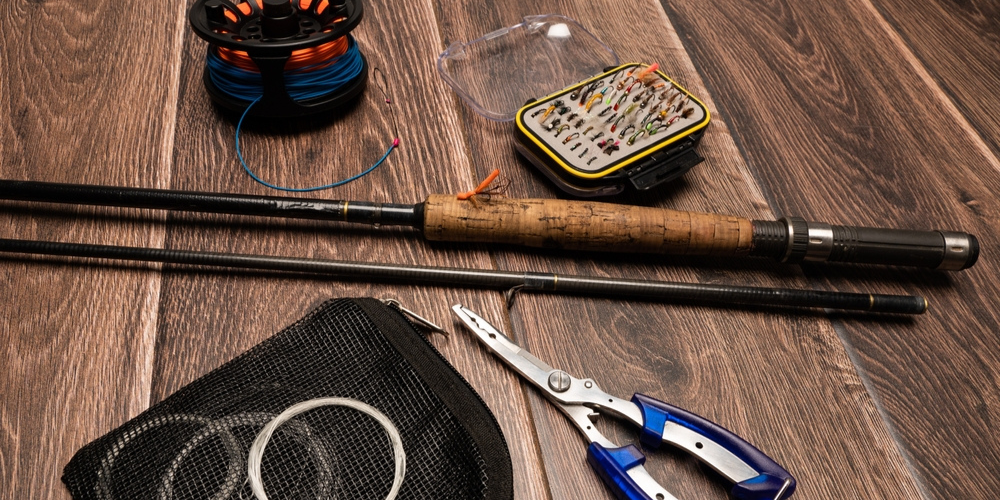
Perfect Fishing Line Structure:
- Line Strength (Pound Test): The pound test refers to the amount of weight the line can handle before breaking. Choose a line strength that matches the size of the fish you’re targeting. Lighter lines (2-8 lb) are suitable for small fish like panfish, while heavier lines (10-30+ lb) are necessary for larger species like bass or saltwater gamefish.
- Line Diameter: Thinner lines have less visibility underwater, which can be advantageous in clear water or when targeting skittish fish. However, thinner lines might have lower abrasion resistance, so consider the fishing environment. Thicker lines are more abrasion-resistant and suitable for fishing in heavy cover.
- Fishing Technique: The fishing technique you plan to use plays a significant role in line selection. If you’re casting lures, a low-stretch line like fluorocarbon or braided line is beneficial for better sensitivity and hook sets. For trolling or bottom fishing, monofilament lines work well, providing some forgiveness during sudden fish strikes.
- Budget: Fishing lines come in a range of prices. While it’s tempting to go for the cheapest option, investing in a high-quality line can prevent frustration and lost fish. Look for a line that offers good performance and durability within your budget.
- Line Color: The color of the fishing line can affect its visibility underwater. In clear water, choose a line color that matches the water’s clarity (clear or low-visibility colors). In murky or stained water, you can opt for high-visibility colors like fluorescent or hi-vis yellow to help you track the line’s movement.
- Consider Line Memory: Some lines have more memory than others, meaning they retain the shape of the spool, resulting in twists and curls that can affect casting and presentation. Look for lines with low memory, especially if you’re using spinning reels.
The Ultimate Guide to Recommended Line Weight for Different Types of Fish
As an angler, understanding the appropriate line weight for various fish species is a critical aspect of a successful fishing experience. The right line weight ensures you have the strength to handle the fish you’re targeting while still maintaining the finesse required to present your bait or lure effectively. In this guide, we’ll explore the recommended line weights for different types of fish, helping you make informed decisions on the water.
Panfish (Bluegill, Crappie, Perch):
Recommended Line Weight: 2-6 lb
Panfish may be small, but they provide great fun for anglers, especially those just starting out. A light line in the 2-6 lb range is ideal for these species. It allows you to detect subtle bites and offers enough strength to handle the occasional larger panfish while maintaining a delicate presentation.
Bass (Largemouth and Smallmouth):
Recommended Line Weight: 8-20 lb
Bass are known for their fighting spirit and can vary greatly in size. A versatile line weight range of 8-20 lb covers various bass fishing scenarios. Lighter lines are suitable for finesse techniques, while heavier lines (12-20 lb) are excellent for handling bigger bass in heavy cover.
Trout:
Recommended Line Weight: 4-8 lb
Trout are found in a variety of water types, from small streams to large rivers and lakes. A 4-8 lb line is ideal for most trout fishing situations. Lighter lines work well in clear waters, while slightly heavier lines can handle bigger trout or fishing in faster currents.
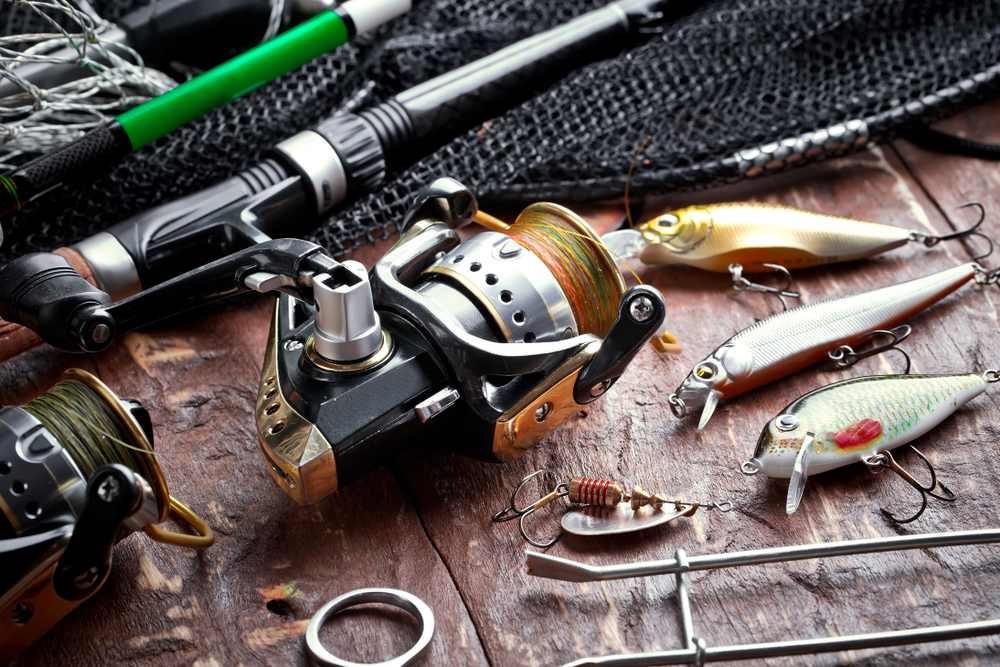
Walleye:
Recommended Line Weight: 6-10 lb
Walleye are often found in clear to slightly stained waters. A line weight of 6-10 lb is appropriate for targeting walleye. It provides the necessary sensitivity for detecting bites and can handle the occasional larger walleye or fishing near structures.
Pike and Muskie:
Recommended Line Weight: 12-30+ lb
Pike and muskie are aggressive predators known for their size and power. A heavy line in the 12-30+ lb range is essential when targeting these fish. Heavier lines prevent break-offs and help control these strong fish during the fight.
Saltwater Gamefish (Redfish, Snook, Sea Trout):
Recommended Line Weight: 10-30 lb
Saltwater gamefish vary in size and habitat, but a line weight of 10-30 lb covers most scenarios. Lighter lines are suitable for finesse fishing in clear waters, while heavier lines are essential for battling larger fish near structures or in turbulent waters.
Bottom Fish (Snapper, Grouper):
Recommended Line Weight: 20-50 lb
Bottom fish like snapper and grouper are powerful and often inhabit reef or rocky structures. A line weight of 20-50 lb provides the strength needed to handle these fish and prevent them from diving into the cover.
How to String a Fishing Pole for Beginners: A Step-By-Step Guide
One of the essential skills every angler should master on how to stringing a fishing pole. Properly strung fishing gear ensures a successful and enjoyable fishing experience. Whether you’re a beginner or an experienced angler, this step-by-step guide will walk you through the process of stringing your fishing rod with ease. Let’s dive in!
Step 1: Gather Your Materials
Before you begin, make sure you have the necessary materials on hand. You’ll need:
Fishing line: Choose the appropriate line type (monofilament, braided, or fluorocarbon) based on the fishing conditions and your target species.
Fishing rod: Ensure your rod is designed to handle the fishing line’s weight and suits the type of fishing you plan to do.
Reel: The reel should match the rod’s specifications and the fishing line you’ve selected.
Scissors or line cutters: These will be used to trim the excess line.
Arbor knot: This knot secures the line to the reel spool.
Step 2: Thread the Line Through the Guides
Start by threading the fishing line through the rod’s guides, starting from the tip and working your way down towards the handle. Make sure the line goes through each guide smoothly, ensuring there are no tangles or loops.
Step 3: Attach the Line to the Reel
Now, it’s time to attach the fishing line to the reel. Here’s how to do it:
Open the bail (the wire arm that covers the spool) on the reel.
Take the end of the fishing line and tie it to the reel spool using an arbor knot. An arbor knot is simple and effective for securing the line to the spool. Make sure the knot is tight to prevent slippage.
Close the bail once the line is securely attached to the spool.
Step 4: Reel in the Line
Slowly turn the reel handle to start reeling in the fishing line. Keep the line taut as you do this, ensuring it wraps evenly and tightly around the spool. Make sure to fill the reel to the recommended level, leaving some space to accommodate the tension while fighting a fish.

Step 5: Trim the Excess Line
Once you’ve filled the reel with the desired amount of fishing line, use scissors or line cutters to trim the excess line, leaving about 1/8 inch of line extending past the edge of the spool.
Step 6: Check for Proper Line Tension
After stringing the fishing rod, it’s crucial to check the tension of the line. An appropriate line tension ensures that your fishing line won’t come loose during casting or fighting a fish. To do this:
Hold the rod at a slight angle, ensuring the line isn’t slack but not overly tight either.
Gently press down on the line with your thumb, about halfway between the first guide and the reel.
The line should flex slightly but not be too loose or too tight. It should feel snug against the rod but not so much that it hampers the flexibility of the rod.
Step 7: Practice Casting
Now that your fishing rod is properly strung, take a few moments to practice your casting technique. Casting is a fundamental skill in fishing, and a well-strung rod can significantly improve your casting accuracy and distance. Find an open area, like a backyard or a park, and practice casting to get comfortable with the feel of the line.
Step 8: Regularly Inspect Your Line
Remember that fishing line can wear out over time due to friction, exposure to sunlight, and contact with rocks or underwater structures. Regularly inspect your line for signs of wear and replace it when necessary. This ensures that you’re always fishing with a reliable setup that reduces the risk of line breakage.
Step 9: Learn About Different Knots
While the arbor knot is essential for attaching the line to the reel spool, it’s also essential to learn a variety of other fishing knots. Different knots serve different purposes, such as tying hooks, lures, or leaders. Familiarize yourself with popular fishing knots like the improved clinch knot, palomar knot, and loop knot to expand your fishing skills.
Step 10: Keep Practicing and Learning on How to String a Fishing Pole
Stringing your fishing rod is just one aspect of the exciting world of fishing. As you gain experience, continue to refine your skills, learn from other anglers, and stay updated on the latest fishing techniques, gear, and best practices. Fishing is a rewarding hobby that offers endless opportunities to connect with nature and challenge yourself.
FAQs for How to String a Fishing Pole
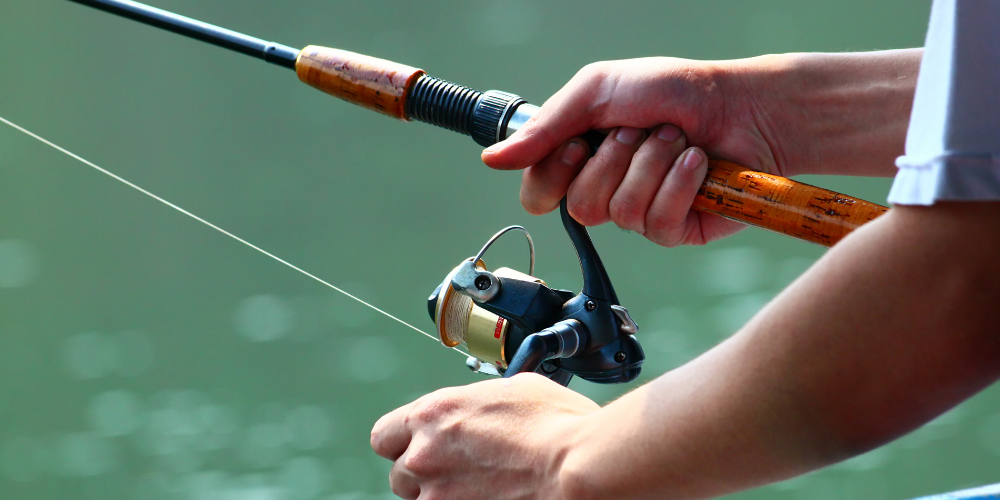
Why is it important to string a fishing pole properly?
Properly stringing a fishing pole ensures that your line is securely attached to the reel, allowing for smooth casting and effective fishing. It also prevents tangles, reduces line breakage, and maximizes your chances of landing a fish successfully.
What type of fishing line should I use?
The type of fishing line you should use depends on factors such as the fishing conditions, target species, and your personal preferences. Common types include monofilament, braided, and fluorocarbon lines, each with its unique characteristics. Research the type of fishing you plan to do to choose the right line.
How do I know how much line to put on the reel?
It’s essential to fill the reel to the recommended level while leaving a little space to accommodate the tension while fighting a fish. Most reels have line capacity information on the packaging or in the user manual. Typically, you want to fill the spool up to about 1/8 inch from the edge.
What is the best knot for attaching the line to the reel spool?
The arbor knot is a simple and effective knot for attaching the fishing line to the reel spool. It’s easy to tie and provides a secure connection. Make sure to tie the knot tightly to prevent slippage.
How do I check the line tension on the fishing pole?
Hold the rod at a slight angle and gently press down on the line with your thumb, about halfway between the first guide and the reel. The line should flex slightly but not be too loose or too tight. It should feel snug against the rod without hindering its flexibility.
How often should I inspect and change my fishing line?
Regularly inspect your fishing line for signs of wear, including fraying, discoloration, or damage. Replace the line if you notice any of these issues. Additionally, if you’ve been fishing in particularly rough conditions or if you’ve caught large fish recently, it’s a good idea to check and potentially replace the line.
What other fishing knots should I learn besides the arbor knot?
Learning various fishing knots is valuable. Some essential knots include the improved clinch knot for tying hooks or lures, the palomar knot for a strong loop connection, and the loop knot for lures that benefit from extra movement.
Are there any tips to make stringing a fishing pole easier?
Having a clean, organized workspace can make the process smoother. It’s also helpful to have a second person hold the rod steady while you attach the line to the reel. Practice knot tying before heading out on the water to increase your efficiency.
You Can Watch This Video For Easier Way to Learn How to String a Fishing Pole
Conclusion: How to String a Fishing Pole for Beginners
By following this step-by-step guide of how to string a fishing pole, you’ll be well-prepared for your fishing adventures. Remember that practice makes perfect. So keep honing your skills, exploring new fishing spots, and enjoying the thrill of the catch. Stay safe, respect the environment, and cherish the moments spent fishing. Happy angling!

The young boys ended up stimulated to read through them and now have unquestionably been having fun with these things.